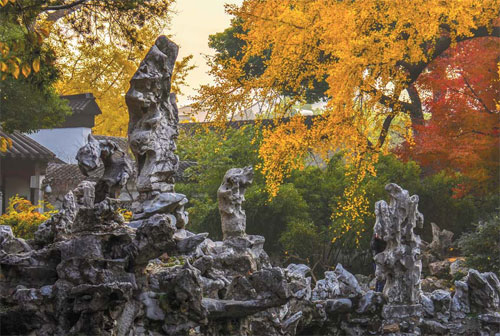Classical gardens adorn the city
|
Lion Forest Garden |
Lion Forest Garden
Lion Forest Garden was built in 1342 during the Yuan Dynasty (1279-1368) by a Zen Buddhist monk named Tianfu in memory of his teacher Zhongfeng. The name of the garden is derived from the lion-shaped rocks, which also resemble a lion in Buddhist sutras.
The garden set a benchmark for many of the key features of Suzhou's classical gardens, including pavilions, pagodas, courtyards, buildings and halls. It is also known for its ponds, lakes, hills and unusual rocks. It is nicknamed "the kingdom of artificial hills".
The garden's design attracted the attention of many noted visitors, such as Yuan Dynasty painter Ni Zan, who created Painting Scroll of Lion Forest in 1373. The Kangxi and Qianlong emperors of the Qing dynasty also visited the garden many times. Qianlong also had replicas of the garden both in the Summer Palace in Beijing and at Chengde Mountain Resort in Chengdu, Hebei province.
In 1918, renowned merchant Bei Runsheng purchased the garden. In 1953, it was opened to the public after renovation by the Suzhou city government. In 2000, it was named by UNESCO as a World Heritage site. In 2006, the State Council listed it as one of the country's major preserved sites.















